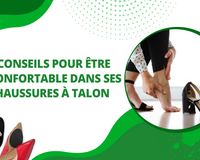
Flatfoot is a deformity of the foot that results in the absence of the internal arch and excessive collapse of the plantar arch. Visible in around 40% of the population, flatfoot is a common, asymptomatic condition.
However, some people with this condition may experience more or less excruciating pain, necessitating the use of an orthopedic device. surgical operation. After surgery, the wearing of orthopedic flatfoot shoes for better rehabilitation without too much pain.
We explain everything you need to know about flatfoot surgery to manage the severe pain associated with this condition.
What is flatfoot?

Flatfoot is defined as a foot pathology characterized by a complete collapse of the arch of the foot, accompanied by the disappearance of the internal arch of the foot. An imbalance between ankle and heel is observed. Although this deformity is not always harmful (physiological flatfoot), it can cause severe pain in the ball of the foot (pathological flatfoot).
However, in order to avoid complications such as chronic pain, toe deformity (valgus flatfoot, hallux...) or even instability of the hips, knees and ankles, treatment is essential. Depending on age, flatfoot can have different causes.
In adults, there are two main causes of flatfoot.
- Congenital flatfoot : generally caused by insufficient foot muscles and ligaments, preventing the arch of the foot from strengthening normally.
- Acquired flatfoot: caused by a deformation of the bones, usually due to factors such as excess weight, degenerative disease, diabetes, fracture or trauma.
In children, flatfoot is a common deformity that requires no treatment and dissolves naturally around the age of 5. However, if a persistent deformity is observed, treatment by a foot specialist is essential.
Types of flatfoot treatment

Also visible in children over the age of 5, this pathology requires adult flatfoot surgery when excruciating pain is observed in the patient. However, where pain and deformity are not too severe, pathological flatfoot can be treated by other means before considering surgery.
The use of orthopedic insoles
Thanks to their healing properties, flat-foot orthotics straighten the shape of the foot and help relieve pain. By supporting the arch of the foot, a flat-foot orthotic returns the patient's foot to its natural direction.
Wearing the right shoes
✅ To facilitate the treatment of flat feet, you should avoid wearing narrow shoes and opt for adapted flat-footed shoes. An ideal flatfoot shoe for an adult should have the following characteristics:
- Wide toe and forefoot space to limit compression.
- Solid support for the arch of the foot.
- A firm, solid heel at the back of the foot for enhanced stability.
Physiotherapy follow-up
As a treatment method based on massage sessions, physiotherapy can delay or even avoid the need for flatfoot surgery. Massage techniques, arch stretching and flat-foot exercises are prescribed to relieve pain and restore your foot to its normal shape.
However, a flatfoot operation will be scheduled if none of these curative methods proves effective.
Flatfoot surgery

Generally speaking, flatfoot surgery is performed when natural treatments such as wearing insoles or flatfoot orthopedic shoes have not been effective. There are two types of operation available to remedy flatfoot pathology.
Conservative surgery
As the name suggests, the aim of conservative surgery is to keep the joint functioning as normally as possible. It can be performed on reducible forms of flatfoot.
This type of surgery generally involves the following operations:
- Osteotomy medial displacement osteotomy of the calcaneus, cutting the heel bone to restore it to its natural physiological axis. To promote strong tendon return, transfer of the toe flexor may also be performed.
- Arthrodesis allows an implant to be placed between the talus and calcaneus, raising the talus by blocking the joint abutment.
- As a form of calcaneal lengthening osteotomy, the Evans technique involves placing a graft on the lateral border to lengthen the calcaneus. This technique corrects the valgus position and brings the foot inwards.
In addition, the orthopaedic surgeon can perform further operations, such as lengthening the Achilles tendon or repairing the posterior tibial tendon, to alleviate painful flat feet.
Non-conservative surgery
The surgeon performs this type of operation when the flatfoot is at a severe stage (in the case of synostosis). The surgeon has no other option than to totally or partially block the mobility of the joint.
Operation for this condition may involve single, double or even triple arthrodesis, depending on the severity of the flatfoot. With the aim of correcting the shape of the flatfoot and recreating the medial arch, the doctor first immobilizes one joint and two bones, then performs an arthrodesis. arthrodesis is performed to straighten the plantar arch.
Although the bone and joints will be positioned and fixed in a position conducive to correct weight-bearing, ankle mobility will still be preserved. However, even after a successful flatfoot operation and post-operative period, some intensive walking may prove difficult.
Flatfoot surgery price
Flatfoot is a foot pathology characterized by a collapse of the arch of the foot, generally followed by pain requiring surgery. A flatfoot operation can cost an average of €3,988, depending on the stage of evolution of the flatfoot, the type of flat, the duration of the operation, and the states and surgeons involved.
Flatfoot operation convalescence

Flatfoot surgery requires lengthy rehabilitation. Its duration therefore varies according to the degree of the initial pathology and the surgical operations performed.
After any surgical operation, crucial monitoring of the healing process is essential to limit post-operative risks. The orthopedist takes care to avoid complications, and advises the patient on resuming activity. A range of physiotherapeutic exercises is also prescribed.
Flat foot operation doctors' opinions
Flatfoot is a foot deformity that needs to be treated when it causes pain. The doctor may resort to foot surgery when natural treatments have failed. In the opinion of some doctors on flatfoot surgery, it is essential to control your weight and avoid smoking 2 months before the operation and 4 months afterwards, in order to hope for the disappearance of pain.









